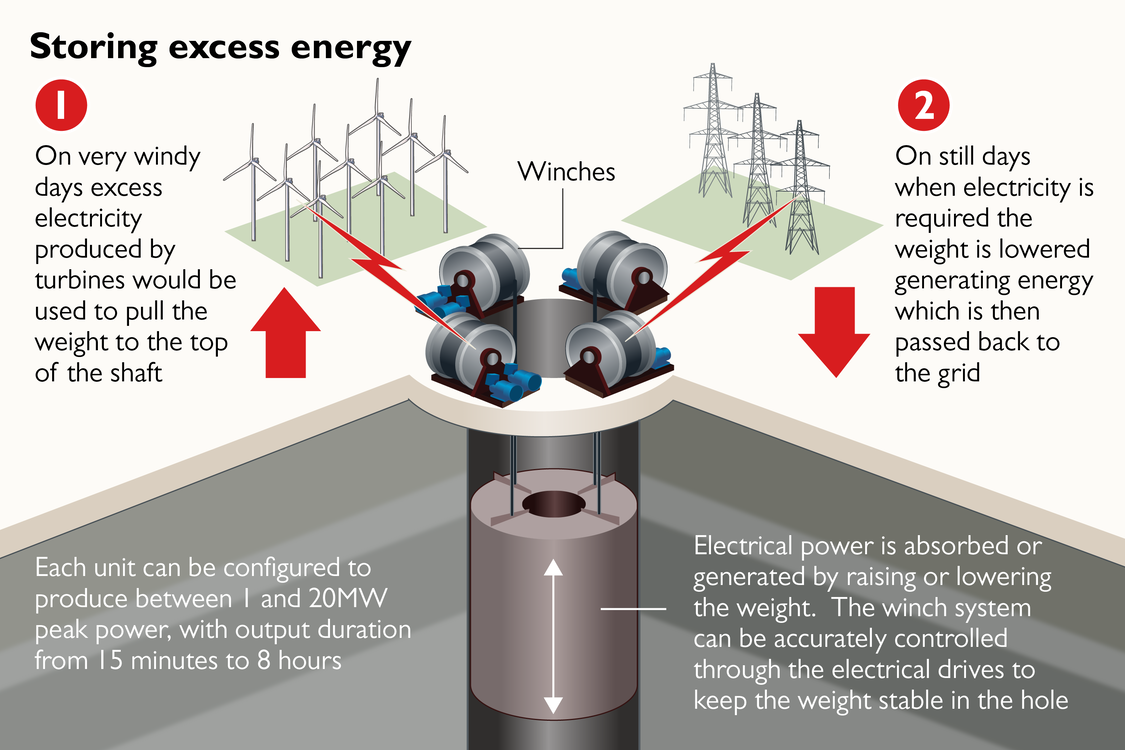Scottish energy storage specialist Gravitricity has embarked on a project to demonstrate the feasibility of its gravity energy storage technology for grid balancing in India as the nation has an increasing share of renewables in its power mix.
The company has secured £194,000 from the UK Government’s Ayrton Fund to find a demonstration site in India suitable for its gravity energy storage technology. The Ayrton Fund, part of the UK’s International Climate Finance commitment, aims to give developing countries access to the latest cutting-edge tech to help reduce their emissions and meet global climate change targets.
Gravitricity has developed a gravity-based energy storage system that works by raising heavy weights (totalling up to 12,000 tonnes) in a deep shaft and then releasing them when energy is required. In India, the firm has partnered with India energy specialist Panitek Power in the 12-month project to identify and shortlist sites for a demonstration scheme.
The gravity storage technology could be ideally suited to India, which aims to install over 500 GW of renewables by 2030, up from 100 GW in 2021, to supply its fast-growing economy.
Chris Yendell, project development manager at Gravitricity, said, “With the introduction of renewable energy generation at this scale, new flexible storage services will be essential to ensure the grid continues to operate in a stable manner. Gravitricity’s versatile technology is ideally placed to deliver the balancing services required to achieve this stability.”
Gravity storage is a relatively simple technology. It doesn’t rely on any rare earth metals, and has a very long lifespan, meaning it can be manufactured and deployed locally alongside vast amounts of new grid infrastructure which will also be required to meet the rapid growth in demand.
Parag Vyas, chief commercial officer at Panitek Power, told pv magazine, “Pumped hydro schemes have traditionally been the main long-duration electrical energy storage option in India, and 900 MW of solar+pumped hydro projects were awarded over the last year in the nation. Project developers are currently developing several solar+lithium-ion projects and are experimenting with sodium-sulphur batteries. Alternative options are vanadium flow batteries, compressed air energy storage, and flywheels. However, limitations range from high cost, performance degradation, and lack of ability to offer both long duration and fast response.”
“South Asia does not have a well-developed lithium-ion or flow battery supply chain capability and import tariffs of 28% make these solutions particularly expensive. Access to the rare-earth minerals needed for chemical batteries is also limited. These are currently supplied by China, and geo-political concerns are leading the Indian government in particular to pursue technologies dependent on readily available materials, such as cement and steel.”
Gravitricity claims its system can operate for up to 50 years and store energy at half the cost of lithium-ion batteries.
Gravitricity will rely on the in-country expertise of energy specialists Panitek Power, who will work with local partners to identify sites and supply chain firms to deliver a specific proposal which could be built in the near term.
“India has an immediate and growing need for energy storage technologies. In many locations there is little or no grid, and it makes sense to integrate energy storage within their evolving infrastructure to cope with intermittent generation,” stated Vyas. “In addition, as a country’s share of renewables rises, this can cause frequency and voltage disturbances in the existing grid due to mismatch of load demand and generation. Gravitricity’s technology has a response time of less than one second and can be cycled thousands of times, making it ideally suited to grid balancing and rapid frequency response services.”
Green tech pioneers are already planning to install Gravitricity’s invention in decommissioned mineshafts and custom-built shafts in the UK and mainland Europe.
Gravitricity has trialled a 250 kW technology demonstrator in 2021 and is now developing MW-scale plant using underground shafts in the UK and Europe, to be constructed in 2023.
“The Gravitricity system is highly configurable, and an optimal region-specific design needs to be developed, adapted directly to end-customer business models, and the types of revenue streams that can be accessed. This includes identifying local supply chain capability, particularly to meet technical and quality specifications, and any adaptations in the design that may be needed. Cost savings can also be made over European suppliers,” stated the company.
Gravitricity’s solution can be built in existing mineshafts or in purpose sunk shafts with a 50-year design life.
This content is protected by copyright and may not be reused. If you want to cooperate with us and would like to reuse some of our content, please contact: editors@pv-magazine.com.









By submitting this form you agree to pv magazine using your data for the purposes of publishing your comment.
Your personal data will only be disclosed or otherwise transmitted to third parties for the purposes of spam filtering or if this is necessary for technical maintenance of the website. Any other transfer to third parties will not take place unless this is justified on the basis of applicable data protection regulations or if pv magazine is legally obliged to do so.
You may revoke this consent at any time with effect for the future, in which case your personal data will be deleted immediately. Otherwise, your data will be deleted if pv magazine has processed your request or the purpose of data storage is fulfilled.
Further information on data privacy can be found in our Data Protection Policy.